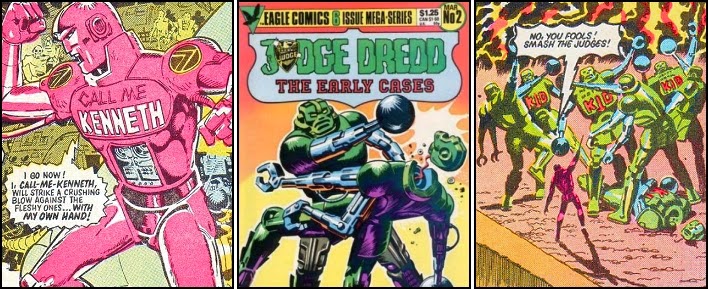 |
| ARKHAM MANOR No. 1, December 2014 |
As far as ideas for (yet) another “Batman” title goes, the
decision by “DC Comics” to merge two of Gotham City’s most iconic landmark
institutions together within a single comic book has got to be one of their
most intriguing. Few who have encountered the exploits of the Dark Knight,
irrespective of the medium with which they’ve followed him, will not have heard
of the Elizabeth Arkham Asylum for the Criminally Insane or the family home of
the Caped Crusader himself, Wayne Manor. But the thought of Bruce Wayne’s
mansion actually becoming the fictional psychiatric hospital and housing the
super-hero’s Rogue Gallery is unthinkable...
Enter author Gerry Duggan, who
with this startling first issue, not only portrays a Gotham City devoid of any Arkham
Asylum, following the building’s total demise in the events of Issue Thirty of “Batman
Eternal”, but consigns Wayne Manor to become its replacement with the stroke of
Mayor Hady’s pen. What follows is an insightful look into Batman’s psyche and
just how dear to his heart his parent’s home actually is to him. Throw in a couple
of mysterious murders at the freshly opened ‘Arkham Manor’ and Bruce Wayne
going deep undercover as an inmate himself, and this title has all the
hallmarks of being a very gritty, deep dark look into what really makes The Batman
tick.
Unfortunately the comic’s interior art has been drawn by Shawn Crystal, who
despite producing a compelling piece for the main cover, fails to deliver the
goods for the majority of the pages inside. The former “Marvel Comics” “Deadpool”
inker and penciler certainly provides the book’s illustrations with a unique look,
and one that is not dissimilar to the awkward-looking ‘trademark’ style of popular
“The League Of Extraordinary Gentlemen” artist Kevin O’Neill. But that simply
makes it quite hard to differentiate between some of the main characters within
the storyline, including Bruce Wayne.
Worse, the Americana rtist seems perfectly capable of drawing some very nice looking well-proportioned scenery around his figures, which makes his characters’ elongated limbs, square-looking edges and rectangular heads look all the more bizarre and amateurish. Although his depiction of a somewhat dishevelled Dark Knight is actually rather good and fits in well with the storyline's eerie atmosphere; even if the inconsistent grizzled look of Batman’s chin, one panel slightly whiskery and the next sporting a full beard, is somewhat disconcerting.
Worse, the Americana rtist seems perfectly capable of drawing some very nice looking well-proportioned scenery around his figures, which makes his characters’ elongated limbs, square-looking edges and rectangular heads look all the more bizarre and amateurish. Although his depiction of a somewhat dishevelled Dark Knight is actually rather good and fits in well with the storyline's eerie atmosphere; even if the inconsistent grizzled look of Batman’s chin, one panel slightly whiskery and the next sporting a full beard, is somewhat disconcerting.
 The variant
cover art of "ARKHAM MANOR" No. 1 by Eric Canete The variant
cover art of "ARKHAM MANOR" No. 1 by Eric Canete |































